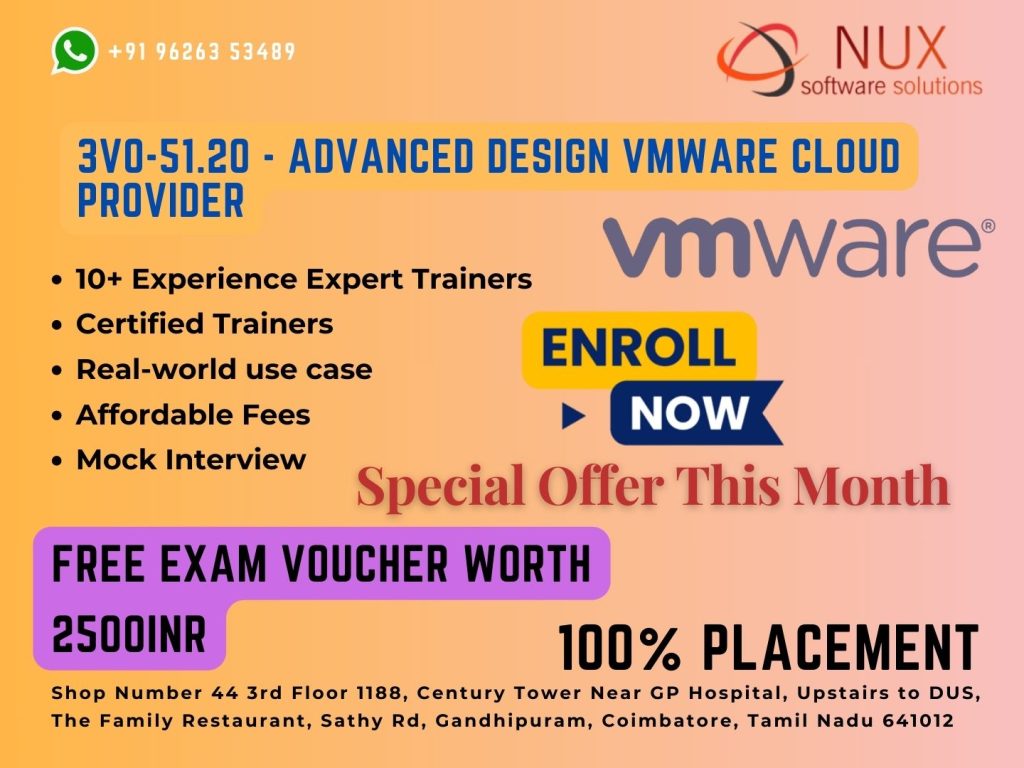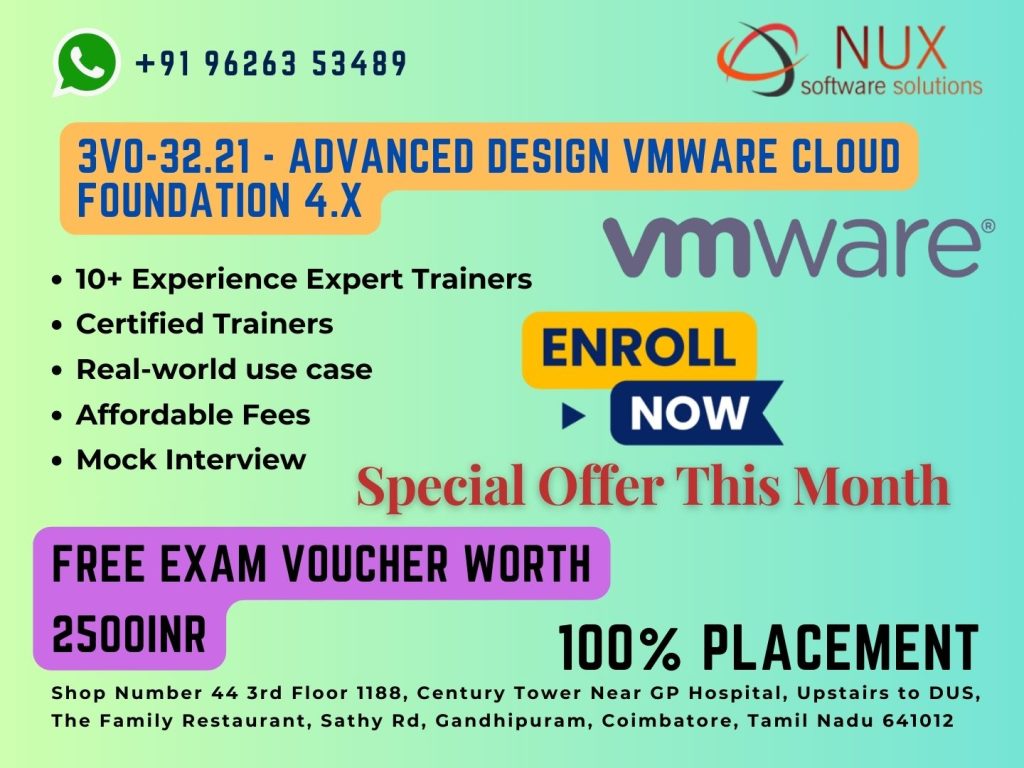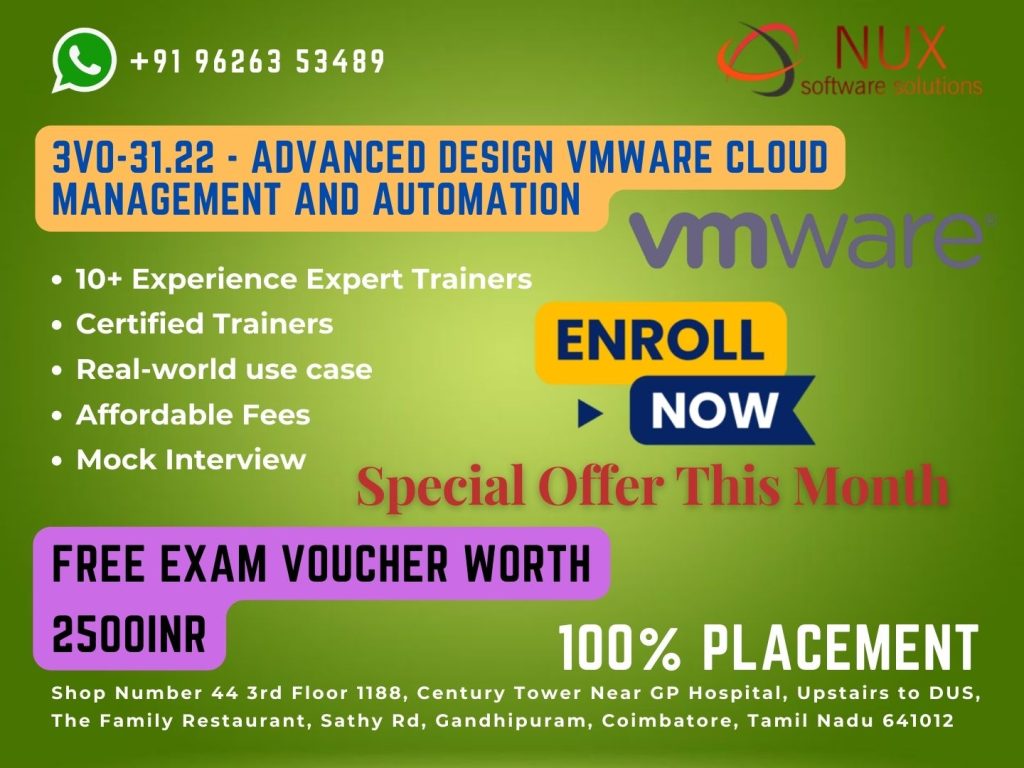Professional VMware vSphere 7.x Training and Certification

Course Overview
The Professional VMware vSphere 7.x training program provides essential knowledge and hands-on skills for configuring, managing, and administering VMware vSphere environments. This includes deep exposure to ESXi hosts, vCenter Server, virtual machines, VMware vSAN, and vSphere HA/DRS clusters.
Designed for system administrators, IT professionals, and virtualization engineers, this course prepares learners to efficiently manage resources, increase availability, and optimize infrastructure performance using VMware’s industry-leading data center virtualization solution.
This course also helps prepare candidates for the VMware Certified Professional – Data Center Virtualization (VCP-DCV) 2023/2024 certification.
Why Choose This Course
Gain complete understanding of the core components of VMware vSphere
Learn to deploy and manage virtual machines, hosts, clusters, and storage
Master high availability, fault tolerance, and distributed resource scheduling
Prepare for VMware VCP-DCV certification, recognized across global enterprises
Learn best practices for secure, scalable virtualization deployments
Who Should Enroll
System administrators and data center engineers
IT professionals managing or planning vSphere-based infrastructures
Technical consultants deploying VMware environments for clients
Candidates pursuing the VCP-DCV certification path
Organizations transitioning to server consolidation and virtual infrastructure
Skills You Will Gain
Installing and configuring VMware ESXi hosts and vCenter Server Appliance (VCSA)
Creating and managing virtual machines, templates, and snapshots
Configuring vSphere clusters, including HA, DRS, and vMotion
Managing networking and storage with vSphere Standard/Distributed Switches
Securing and monitoring vSphere environments using role-based access and logs
Understanding lifecycle management, host profiles, and VMware Tools upgrades
Career Opportunities
VMware vSphere Administrator
Virtualization Engineer
Data Center Operations Specialist
Infrastructure Support Engineer
Cloud Platform Administrator
Applicable across all enterprise sectors—including banking, telecom, IT services, healthcare, government, and cloud hosting providers—where efficient and resilient virtualization is critical.
Virtualize with Confidence – Learn from the Experts
VMware vSphere is the foundation of modern data center operations. This course provides the real-world skills needed to deploy, manage, and optimize scalable virtual infrastructures.
Enroll in VMware vSphere 7.x Training at Linux Training Center, Coimbatore



